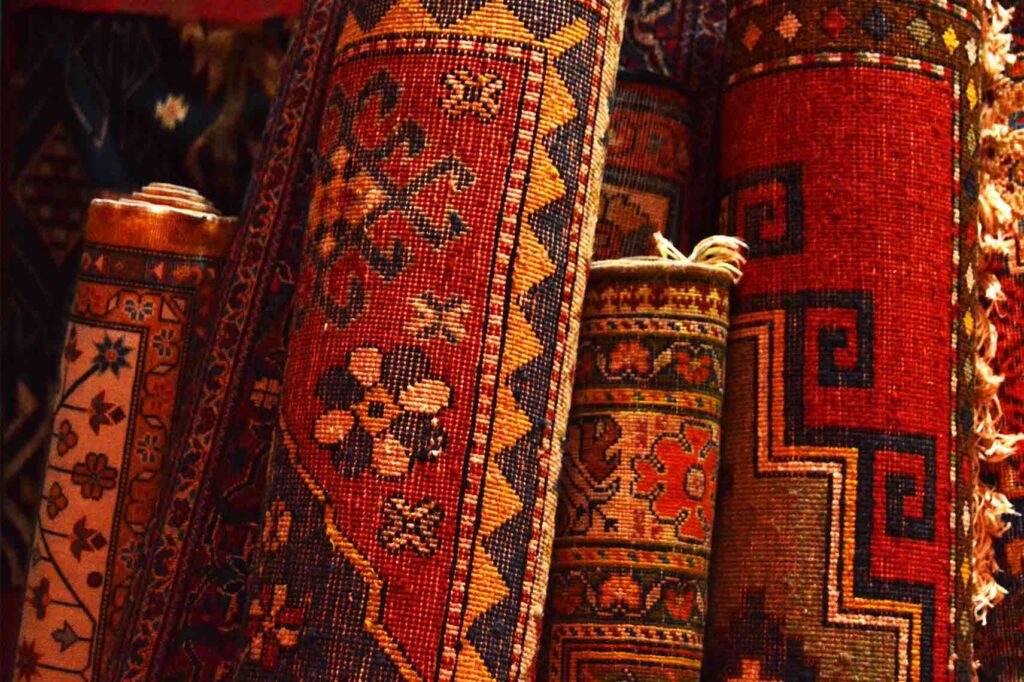Carpets are an important part of making a house feel like a home. A home’s flooring says a lot about it. Each home space appears to have the right amount of coziness and comfort, thanks to the right balance. When you’re constructing or remodelling a house, the wide range of flooring options, range of colours and style of carpet can be overwhelming. Allergies, pet hair, family members, carpet dealer, and which rooms get the most traffic are all considerations to consider when choosing the material (synthetic fibres or organic) or the type and quality of the carpet.
This little guide will go through a few items to think about in order to make the right decision.
How to Find the Right Types of Carpet
Consider the following criteria when selecting the types of carpet for your home after deciding the use and location of your new carpet:
- Carpet fibres: the fabrics that were used to create the fabric;
- Piles: the way carpet appears cut;
- Density and weight: how heavy or thick the carpet is and the impact on its cost;
- Carpet treatments: treatments and products added during/after manufacturing to provide extra protection against stains/moisture;
- Carpet pads: the layer underneath that affects the feel and wear.
Different types of Carpet Fibre
Nylon, polyester, olefin, wool, cotton, and sisal are some of the most commonly used materials to make carpets. Acrylic carpeting was once the rule. Since it wore out so quickly, it fell out of favour.
- Nylon
When treated with stain solution, nylon is the most durable and stain-resistant carpet fibre available. It is the fibre of choice for families with pets and teens, as well as those who host a lot of parties—ideal for high-traffic areas such as hallways and stairwells. Nylon Carpets are the most common and most resilient of all. Learn more about how to protect your carpet to increase its lifespan.
- Polyester
Polyester carpet offers many of the benefits of nylon. It is a low-cost option; it resists moisture and also resists to stains and visible wear. For a long-lasting investment, choose a product with a lower pile and a high twist count.
- Olefin
It is often a low-cost option, but it is easy to maintain, it is softer than nylon, but less durable. It can be used outside since it is very resistant to moisture.
- Wool
More of a Homeowners choice than for a commercial usage. As it is comfortable to walk on. It is durable and soil-resistant and has a nice natural appearance, but it can be very costly for a large surface, almost twice as much as synthetics and much more difficult to maintain as it is prone to fade.
- Cotton
Cotton is one of the softest options and also a nice natural material, but it is a costly one and beware that cotton is prone to stains and fading, on the other hand, it is easy to clean.
- Sisal
It is much stronger and more durable than other natural fibres. It has a rough texture that looks wild and natural, but that might not be as comfortable to walk on. This makes it very appropriate for many outdoor usages.
Different Types of Carpet Lengths & Loops
Carpet Pile Length is the height or length of the visible fibres emerging from the surface of a carpet and that makes up the surface of the carpet. The piles explain how the fabrics are used to create the carpet. To keep the yarn in place, it is normally looped or cut to a specific length and twisted. There are a variety of pile types available, each with its own texture. Some fabrics will cover dirt better than others, while others will track and wear down more easily. Consider the amount of foot traffic and how you plan to use the space (square foot) when choosing one for your home. The quality of carpet makes a difference. Most carpet cleaning services in Montreal should be able to execute a thorough wash. Learn more about carpet cleaning cost from our guide.
Cut Pile Carpet
Straight strands are cut and twisted in a cut pile carpet. It has a light texture, which helps you to see marks like footprints and vacuum streaks. There are many categories, including velvet, plush or Saxony, textured, and lastly, twist pile, which is often called a frieze.
Low Pile
This refers to the height of the carpet. The height affects the wear, appearance, and feel of the material. A short pile carpet has its yarn cut to 0.25″ or less.
Textured Carpet
To provide a sense of depth and variety, textured carpet uses strands of varying lengths. It’s ideal for high-traffic areas because it’s both robust and trackless.
Twist Pile Carpet
Twisted yarn is used in any cut pile carpet to add texture and protect it from wear. More twists typically indicate greater longevity. Frieze is a kind of frieze with a lot of long strands. It is the most long-lasting and is often used in commercial settings.
Plush Carpet
The fluffy type has been trimmed so that the yarn ends protrude. One of the most common types, Saxony plush, has short tufts that are tightly packed to resemble a thick carpet. It doesn’t last as long as loops do.
Level Loop
Yarn is glued on both sides of a level loop pile to create strands of the same height. This style is suitable for high-traffic areas, but it has a more relaxed look. It’s stain-resistant and normally doesn’t have much cushioning.
Berber Carpet
Berber carpet has a nubby texture created by full yarn loops standing upright. Since it is less likely to tuft or shed over time, it lasts longer than a cut pile. The word originally referred to hand-knotted rugs and carpets from Africa’s Berber region. The majority of the computers currently available under this name are made of synthetic materials. If you buy a Berber-style, you’ll almost certainly get nylon level loops.
Patterned Loop
To produce fascinating patterns and textures in the carpet, patterned loop piles use varying heights and colours. It’s perfect for giving a home a relaxed feel, and it’s often used in areas like family rooms and low-traffic areas.
How to Choose the Best Carpet for each area
Best Stairs Carpet
A nylon short pile carpet is ideal for high-traffic areas like stairways and landings. It’s easy to keep clean and won’t mat (no need for carpet padding).
Best Corridors Carpet
Since they hide dirt, dark-coloured carpets are ideal for hallways. You will need to increase the lighting if you choose this option. A Berber-style garment is long-lasting.
Best Hypoallergenic Carpet
Artificial fabrics, such as nylon, are used in the finest hypoallergenic carpets. Dust mites and pet dander are easy to vacuum with a short pile or loops. All you have to do is vacuum regularly to see a significant drop in allergic reactions due to the carpet. A great choice of carpet for pets.
Best Office Carpet in High Traffic Area
Depending on your budget, the best carpet for an office is nylon or wool. For added comfort and a luxurious look & feel, select a long pile or high-level loops, as well as a thicker pad. When choosing your office carpeting, ensure that your carpet fibres will be strong enough to resist the rolling office chairs that may catch the fibres of the carpet in it if they are too long. Since the lobby of your office will experience far more traffic than any other space in your home, a loop pile in a synthetic fibre is preferable to any other type of carpet. It is the most robust, and it is easier to maintain and clean frequently. It is stain, wear, and fade resistant.
Best Boardrooms Carpet
Carpets like Berber or frieze that won’t display wear are ideal for high-traffic areas of the home. If you want a material that is sturdy, stain-resistant, and easy to clean, go with synthetic materials, but always keep in mind the importance of the pile length on the visual impact.
Carpet Treatments
Treatments are available from most vendors to make maintenance easier. These can be built into the carpet itself or applied as a coating during installation. They can assist with the following, depending on the formula: help resist stains, block liquid absorption, avoid the collecting of soils, and remove pet hair. Bear in mind that the efficiency of the products is determined by when they are applied to the carpet. After-market goods are less likely to perform well or last as long as products are added during the manufacturing process. For more assistance, you can always rely on professional carpet cleaning services.
FAQs
Olefin is the most stain-resistant carpet material, colour is added to this resin-based material during the production process, making it highly resistant to bleaching. Nylon’s colour is far less durable.
The best carpet to buy if you want to avoid mold growth in damp areas is a synthetic short pile.
Frieze or Berber-style carpets are the most durable. A higher face weight means more yarn and thus a denser, longer-lasting carpet. The majority of materials would last 5 to 10 years, but these could last 20 to 25 years.
Wool is commonly regarded as the best carpet material available. As a result, it is very expensive. But the higher price tag is justified, as you are less likely to require an early replacement, and with proper maintenance, it may last a lifetime.
Nylon short loop carpets are the simplest to clean and need the least amount of upkeep. They are also less likely to cause matting issues over time.
Textured Saxony or wool Berber are the most comfortable fibre and pile combinations.
Carpets made from natural fibres like Sisal, wool or cotton usually have the lowest amounts of volatile organic compounds (VOCs). You have another option, and you can buy synthetic products and look for a “Green Label” that states the nature of treatments applied or the absence thereof, and the nature of their certification.
A carpet’s density and weight are measured in ounces, with most carpet weighing between 25 and 50 ounces per square yard. This has a huge effect on how it feels, how it looks and how much it costs. More strands of yarn per square yard mean higher quality in fabrics that weigh more and higher price. Even if they have a longer pile, products with a lower density can appear to be thin carpets.




